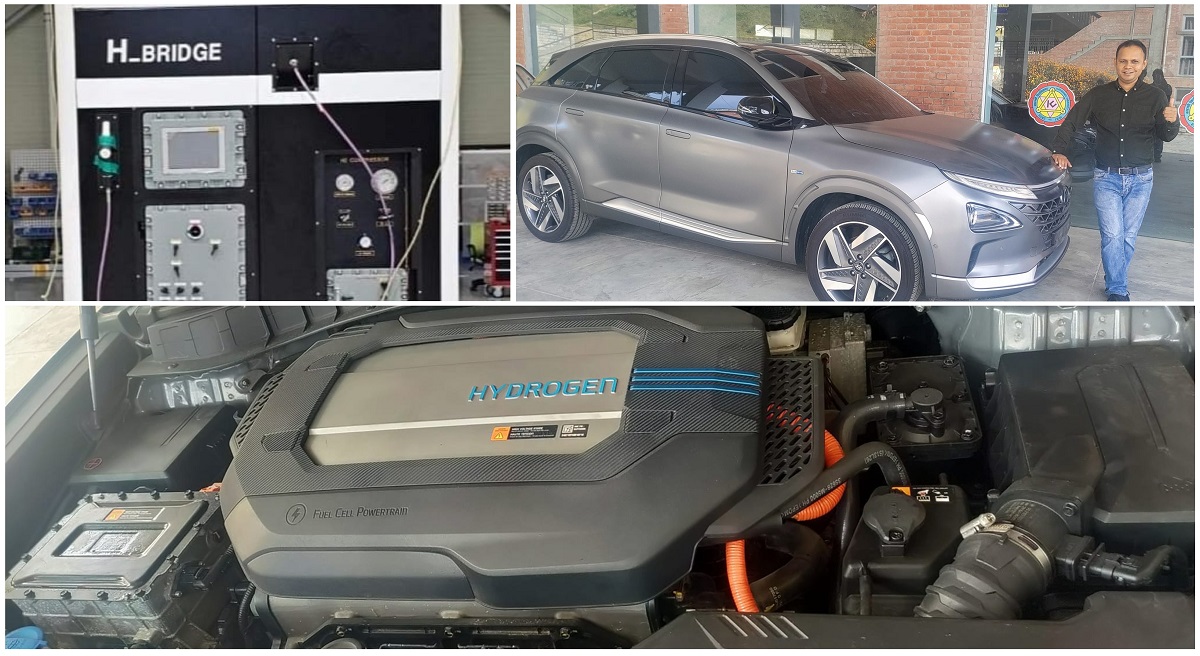
Kathmandu; Kathmandu University (KU), has introduced hydrogen gas-powered car and the necessary equipment for its refueling station for the first time in Nepali market.
Dr Biraj Singh Thapa, head at the Hydrogen Lab, KU, informed that the university itself developed a prototype of the refueling station in China while making it assemble in its presence in South Korea before it was brought in the country. According to him, the university imported a hydrogen car in order to carry out testing of the station by refilling hydrogen gas. Thapa informed that the car and equipment arrived in Nepal from Korea on Saturday afternoon.

Earlier, the KU and Nepal Oil Corporation (NOC) had jointly conducted a study project on how Nepal’s transport sector can be operated using hydrogen as fuel. According to Thapa, the hydrogen car and the refueling center equipment were taken to KU's hydrogen lab as a part of the project.
"We conceived a project and studied how the transport sector can be developed by coordinating Nepal’s produced electricity and imported petroleum fuel," said Thapa. "The project also included research on how NOC can be transformed from an import-based organization into an export-oriented corporation."

According to Thapa they imported the finished hydrogen car citing that it would be cheaper than the one assembled inside the country. The imported car is said to be one of the high-quality hydrogen cars being used in South Korea. As the government waives the customs duty on the car in its type for testing, it could be imported at a minimum cost of US $ 33,000.
“This is a car offers the same level of convenience as a Mercedes does," he said. "Now we are preparing to fill the car with hydrogen from the refueling center, check the safety issues and start running the car in the presence of high political and administrative leadership."
A full tank filled hydrogen car offers a mileage of 1200 km
A hydrogen car is similar to an electric car. It is called 'Fuel Cell Electrical Vehicle' (FC EV). It also runs through electricity-based mechanisms. The motor connected to it is driven by electricity, which is generated by hydrogen gas. The car brought by KU is equipped with a 6 kg hydrogen gas tank. Electricity is generated by the hydrogen filled in the tank and the electricity drives the car.
In an electric vehicle, electricity is supplied by the battery through charging. The battery is heavy and its power storage capacity is also low. Current EVs are capable of traveling a maximum of 500 kilometers from a single full charge. However, a hydrogen car can run 200 km from 1 kg of hydrogen. In other words, it can run up to 1,200 km by using 6 kg of hydrogen, according to Thapa.
3 to 5 times safer than petroleum cars
Generally, hydrogen is considered as a more flammable substance than petrol. Studies however show that hydrogen cars are 3 to 5 times safer than petroleum cars.
"Hydrogen is being understood as only a bomb, but a hydrogen car is safer than a petroleum car," Thapa added. “If petroleum leaks out of a car, then it can set fire in the entire vehicle. But hydrogen being lighter than air, rises in the air instantly, that is why it can result in minimal damage to the vehicle.”